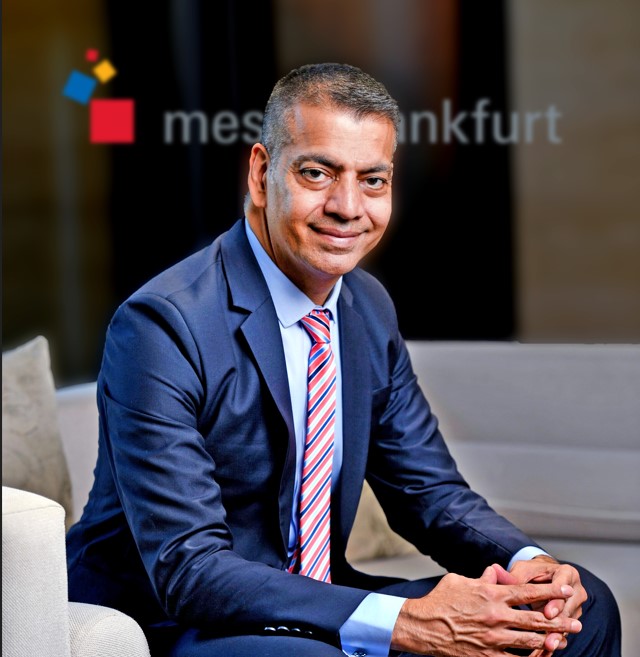Projecting upward growth trajectory the Indian technical textiles industry is driven towards expansion shortly. Serving multiple large industries like automobiles, construction, healthcare, agriculture, home textiles, and sports across the others are driving the demand for technical textiles in India. These industries are highly dependent on specialised textiles for their functionality, performance, quality, durability and life.

India is blessed with a rich textile heritage, has grown and still has a colossal untapped market. Today, the Indian textile industry stands at the interaction of advanced technologies, digital strength, automation in textile manufacturing, processing and finishing, enhanced infrastructure, support from the Indian government and much more. At a recent industry conference which was the 6th edition of the National Conclave on Standards and Regulations for Technical Textile organized by FICCI, BIS and the Ministry of Textiles (MoT), Rachana Shah, Secretary, had forecasted the growth of the Indian and global technical textile industry. She shared the Indian technical industry which is currently valued at USD 22 billion is expected to grow up to USD 40 – 50 billion in the next five years.
One of the most powerful sub-sectors of the Indian textiles industry, technical textiles have a huge variety of applications which are broadly categorised across 12 categories based on their usage. These include Agrotex, Buildtex, Clothtex, Geotex, Hometex, Indutex, Medtex, Mobiltex, Oekotex (Ecotex), Packtex, Protex and Sportex. In recent years, India has witnessed considerable developments in the segments associated with the above categories.
Technical textile products derive their demand from developments and industrialization in the country. Designed for specialised usage, technical textiles are increasingly gaining demand from various segments. These specialised textiles are used for various infrastructural activities like the construction of roads, railways bridges and so on. In agriculture activities li shade nets, insect nets, soil erosion control, etc. Healthcare demands include products like mass, surgical gowns, PPE kits and so on. Automobiles need airbags, seat belts, car upholstery, noise insulation and more. In defence and industrial safety, its applications include firefighting, flame-resistant clothing, chemical-resistant suits, and other protective products. In sports, these textiles are used for moisture wicking, thermal regulation and so on.
These products range from automobiles, civil engineering, construction, agriculture, architecture, healthcare, industrial safety, personal protection and more. This is a highly R&D-driven and innovation-inclined industry.
Gaining a strong foothold worldwide in the ‘global medical destination’, India is garnering much interest and trust in the global healthcare service industry. This is due to its cost efficiency as compared to the other nations, highly skilled medical fraternity, state-of-the-art facilities, hi-tech medical machinery and minimal language barriers across India. Over the past decade, India has earned the reputation of providing high-quality medical services at low costs to medical tourists travelling from across the globe. This highlights the unsaid need to offer advanced solutions of global standards to provide the best-in-class treatment and facilities to the patients.
The growth of technical textiles in India has gained momentum in the past few years. The Secretary at the same conference further shared that the current global market size of technical textiles is USD 260 billion and it is expected to reach USD 325 billion by 2025-262.This indicates more demand from various industry segments boosting production, manufacturing, product innovations and exports. India is a lucrative market especially now with a series of government measures and initiatives to drive the growth of the industry, production quality and cost-effective manufacturing for global companies.
Technological advancements, increase in end-use applications, durability, user-friendliness and sustainable solutions have increased the demand in the global market. Products like wet wipes, disposable home textiles, travel kits, airbags, high-end sports textiles and disposable products like medical textiles will be products of daily consumption shortly.
India’s strength is further driven by the various technical textile associations, Centres of Excellence and more.
Techtextil India is the leading international trade fair for technical textile and non-woven offering complete solutions for the entire value chain of 12 application areas which addresses all visitors’ target groups. Attracting exhibitors, professional trade visitors and investors, the show is a perfect platform to facilitate growth by enabling businesses and professionals to build trade relations, evaluate market trends and share technical expertise.
The ninth edition of Techtextil India 2023 scheduled from 12 – 14 September 2023 at Jio World Convention Centre, Mumbai – will be organised to propel Indian technical textiles and showcase products and innovations in the segment. The trade fair brings to the forefront the new developments and products shaping the industry further.
On the sidelines of the three-day fair, Techtextil Symposium will host various discussions and seminars with a special focus on geotextiles and medical textiles.
Day one will see a series of discussions revolving around Geotextiles and India’s Infrastructure with Gherzi as the knowledge partner. Day two will bring to the limelight the domain of medical textiles with the 3rd edition of Meditex which will be organised in association with the South India Textile Research Association (SITRA). It is one of the oldest associations sponsored by the industry and the Ministry of Textiles.
A dedicated pavilion curated to spotlight the Medical Textiles will be accessible to visitors across all three days. Visitors can witness the participation of prominent medical textile brands like Indorama Hygiene Group, KTEX Nonwoven, KOB Medical Textiles, Manjushree, Sidwin and others who are committed to shaping the trajectory of the sector. In collaboration with SITRA, this collective effort is poised to chart a path towards a dynamic future for the medical textile industry.